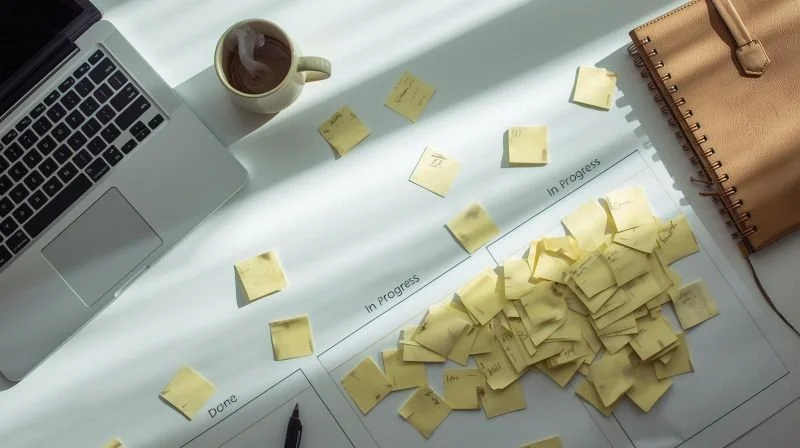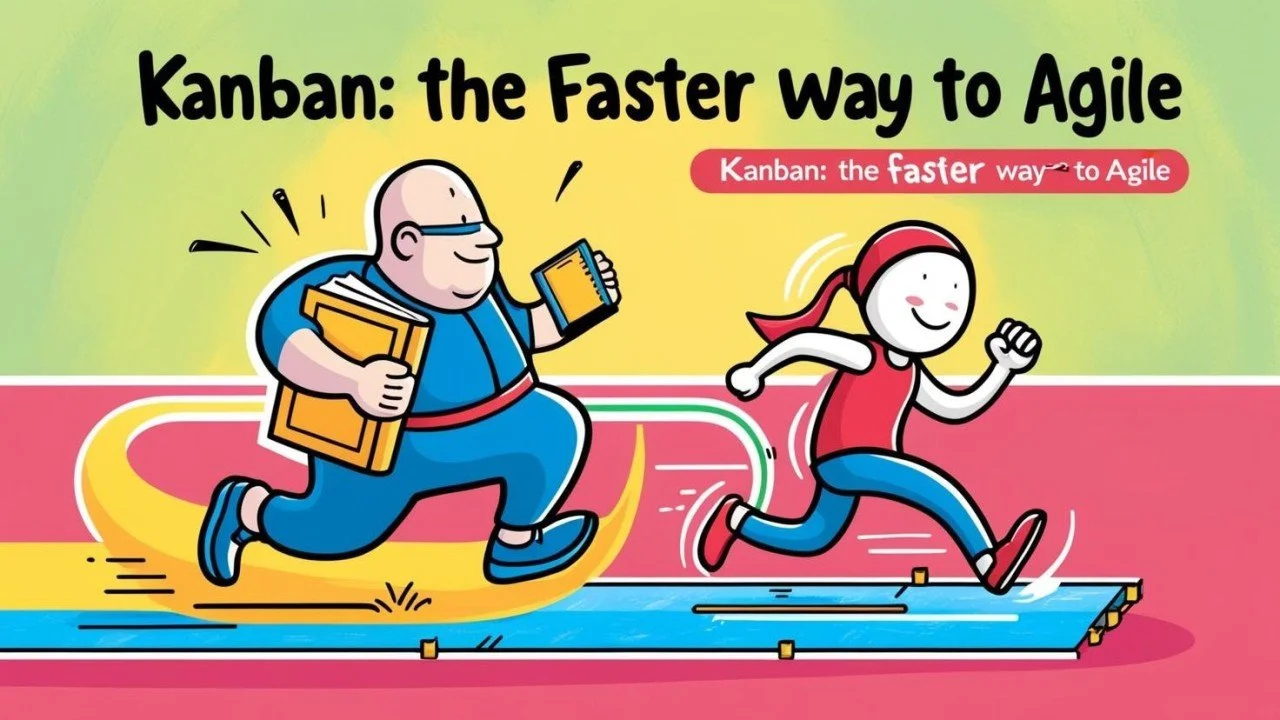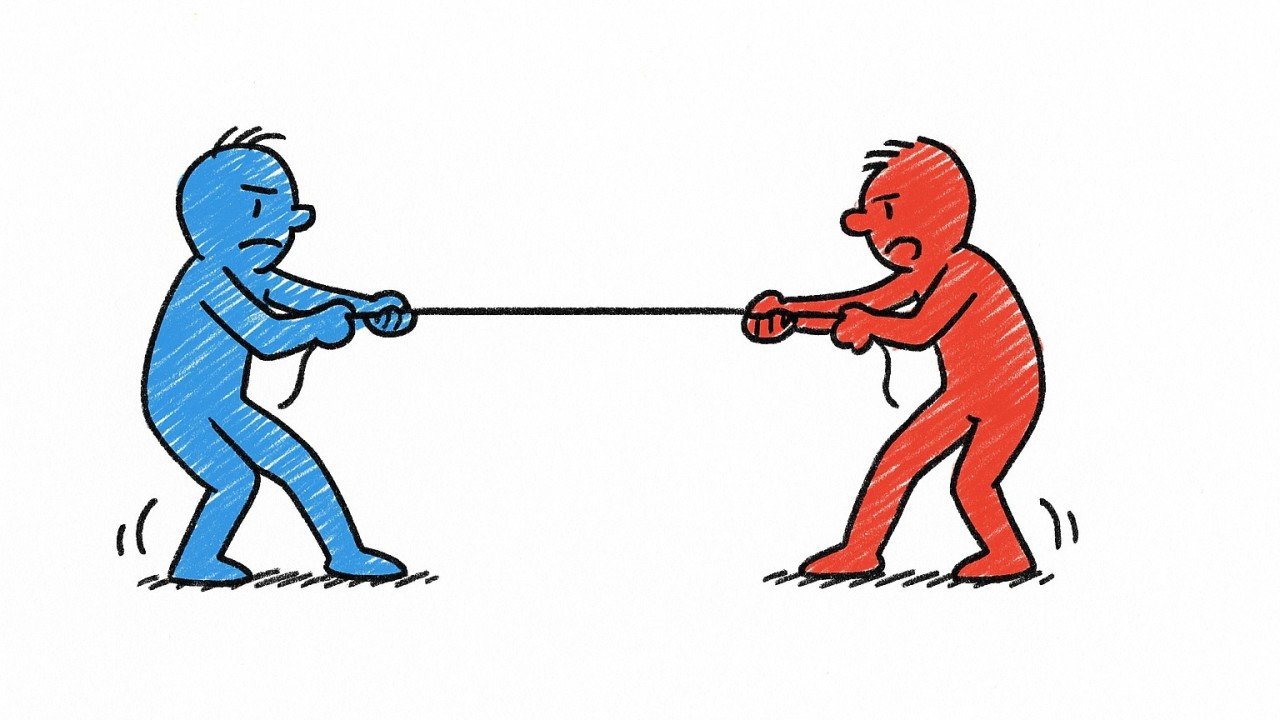If anything here feels confusing or doesn’t quite make sense, have a look at my FAQs. Or if you’d rather ask something specific, drop me an email at simeon@agilesecondopinion.com — or just leave a comment on the post.
Why your team isn’t performing (and why it’s not their fault)
You’ve built a strong business. You’ve got good people. But lately… things just aren’t moving as fast as they should.
You can feel it — that drag between intention and delivery.
Change doesn’t start with a transformation programme. It starts with your 1%
Real change starts with the few who care enough to make a difference.
Back them. Remove the noise around them. Give them the confidence and skills to deliver.
Why work keeps getting stuck in the middle
Most teams don’t struggle to start work — they struggle to finish it.
You can see it on every board: work in progress everywhere, but not much moving to done.
The middle is where work goes to die. It’s where effort builds up, visibility fades, and nobody’s quite sure what’s next.
You don’t need transformation. You need traction.
Start small.
Make work visible.
Limit what’s in flight.
Agree what “done” means.
Then keep improving from there.
You don’t have to “go Agile” to fix delivery
Agile isn’t a badge. It’s just a set of habits that help work flow better (what some might call Kanban thinking):
• Make the work visible.
• Talk to each other regularly.
• Stop starting everything at once.
• Finish what’s started.
The difference between transformation and traction
Remove a few bad habits and things start to move. It’s not a full-blown culture change, but it’s a start: a nudge in the right direction that gives teams momentum again.
I often get asked — “what does good look like?”
When I’m brought in through Agile Second Opinion, I’m not there to audit or judge — I’m there to spot the patterns that hold delivery back. Sometimes it’s obvious, sometimes it just feels off until I spend more time with the team. Once you see it, you can start to fix it. I call it positive negativity — finding what’s not working, so you can focus on what will.
Working with AI doesn’t make you fake. It makes you focused.
I’m dyslexic, which means I think fast and talk even faster. When I’m speaking, that’s a strength. I can go off script, make it relevant, sense the room and adapt. But when I write, those same tangents make things messy. What sounds natural when I say it can look chaotic when I read it back.
Culture shapes how far your transformation will go.
After 36 years in delivery, working with over 70 teams across countless organisations, I’ve come to a simple conclusion: the success of any change or transformation is less about the method and more about the mindset and that mindset is shaped by culture.
The Outcome Is Not Agile
The real outcome? That’s customer impact. Making a tangible difference. Creating something useful
For years I’ve said: “Don’t do Agile, be Agile.” But I think I’ve moved on.
Not because it’s wrong, there’s truth in it, but because it still centres the method, not the mission.
Agile is not the outcome. Agile is a means to an end.
Agile vs Scrum: Clearing Up the Confusion (Because Everyone Still Asks)
Whenever someone finds out I work in Agile, the inevitable question follows: "Oh, you mean Scrum, right?" Cue eye roll.
Here’s the thing: Agile is not Scrum. It’s time we set this straight once and for all.
Seeing vs Looking – Why Most Teams Miss What’s Right in Front of Them
Most teams think they know what they’re working on. The backlog is there, tasks are moving, and everything seems under control.
Then, you put all the work in front of them – every feature, every fix, every half-finished task, every ad hoc request – and suddenly:
• “We’re doing way too much.”
• “Why are we working on these things instead of finishing what matters?”
That’s the difference between seeing work and actually looking at it properly.
Conflict Resolution Without the Drama Budget
Not all conflict is bad. Healthy, respectful debate usually means people care - and that passion can lead to better outcomes. I hate it when people just nod along with something they clearly don’t agree with. The right kind of conflict sharpens ideas. The wrong kind derails momentum.
Leaving Common Sense at the Door
Why do smart people do stupid things at work?
Every day at 8:59am, something strange happens in offices across the world. People arrive bright, capable, and full of ideas. And then, just as they clock in, they quietly remove their common sense, place it in a metaphorical tray marked: "Leave your common sense here" ...and settle in for a long day of obedient nonsense.
Why my goldfish memory makes me a better Agile Coach
There’s a phrase I love: the curse of knowledge. It’s what happens when you know something so well, you forget what it’s like not to know it. You start skipping steps, using jargon, and confusing the very people you’re trying to help.
From Handoffs to Ownership: Why Service-Aligned Teams Deliver Faster
A service-aligned team is cross-functional and built around delivering a specific outcome, not just completing tasks. It contains all the necessary skills, including engineering, design, QA, operations, and even business stakeholders, so there is no need for external dependencies to move forward.
The Prioritisation Trap: Why Trying to Rank Everything is a Mistake
If your backlog feels like a never-ending argument, stop trying to rank everything in one list.
Instead, separate, balance, and adjust as needed.
Common sense? Yes.
Surprisingly rare? Also yes.
Positive Negativity – See the Problems, Fix the Problems, Deliver the Work
Some people I’ve worked with might call me negative (is that right, LM?), but it’s more complicated than that. I’m not a glass-half-full person, but I don’t see it as half-empty either. What I see is an opportunity to fill the damn glass even more. There’s always room for improvement - especially if half your glass is just sitting there, waiting to be used.















